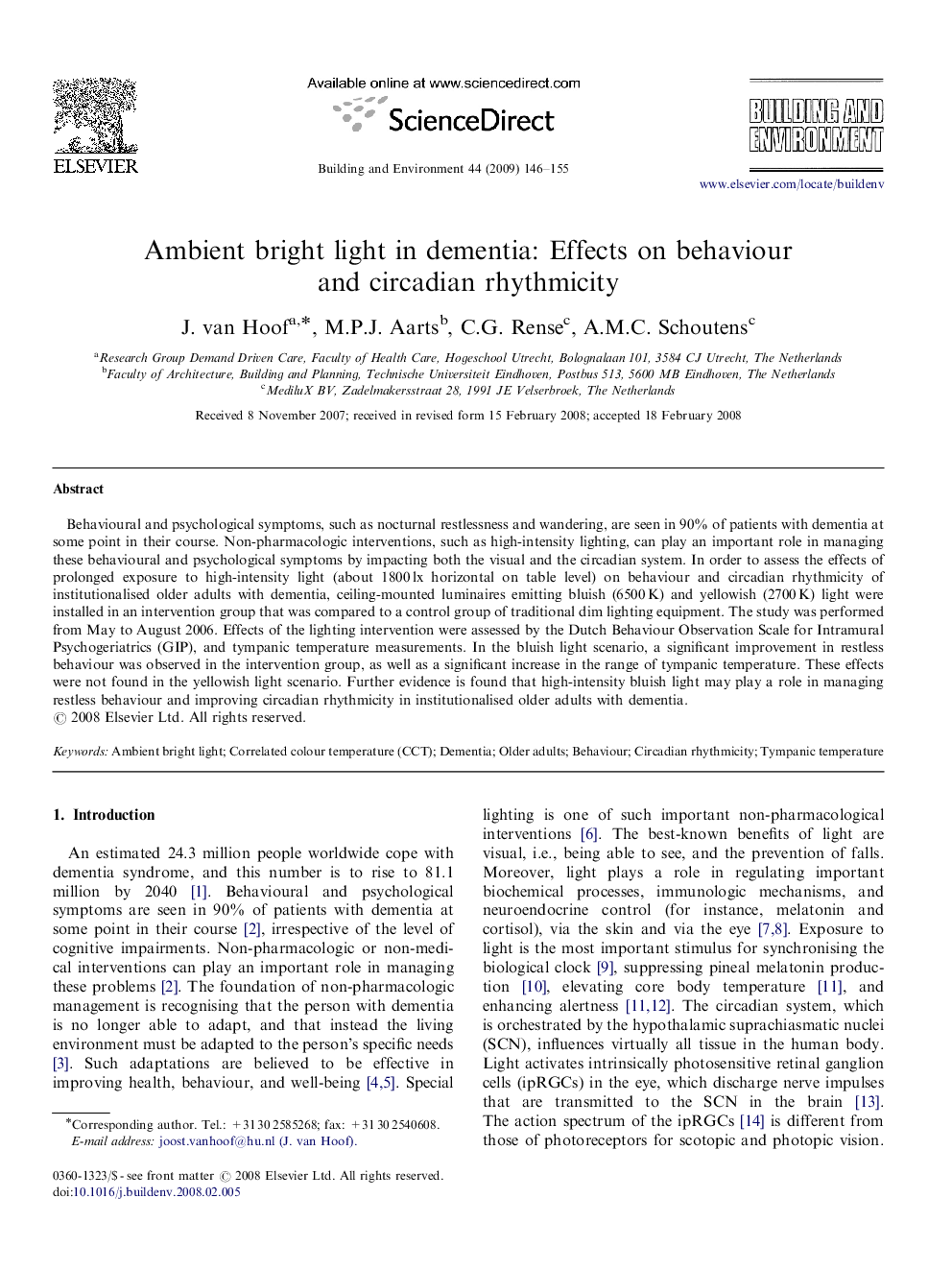| Article ID | Journal | Published Year | Pages | File Type |
|---|---|---|---|---|
| 249799 | Building and Environment | 2009 | 10 Pages |
Behavioural and psychological symptoms, such as nocturnal restlessness and wandering, are seen in 90% of patients with dementia at some point in their course. Non-pharmacologic interventions, such as high-intensity lighting, can play an important role in managing these behavioural and psychological symptoms by impacting both the visual and the circadian system. In order to assess the effects of prolonged exposure to high-intensity light (about 1800 lx horizontal on table level) on behaviour and circadian rhythmicity of institutionalised older adults with dementia, ceiling-mounted luminaires emitting bluish (6500 K) and yellowish (2700 K) light were installed in an intervention group that was compared to a control group of traditional dim lighting equipment. The study was performed from May to August 2006. Effects of the lighting intervention were assessed by the Dutch Behaviour Observation Scale for Intramural Psychogeriatrics (GIP), and tympanic temperature measurements. In the bluish light scenario, a significant improvement in restless behaviour was observed in the intervention group, as well as a significant increase in the range of tympanic temperature. These effects were not found in the yellowish light scenario. Further evidence is found that high-intensity bluish light may play a role in managing restless behaviour and improving circadian rhythmicity in institutionalised older adults with dementia.
